TECH FLASH
A trip to an Italian Parmigiano Reggiano cheese production facility
The thousand-year old process requires quality ingredients, precise control and plenty of time.

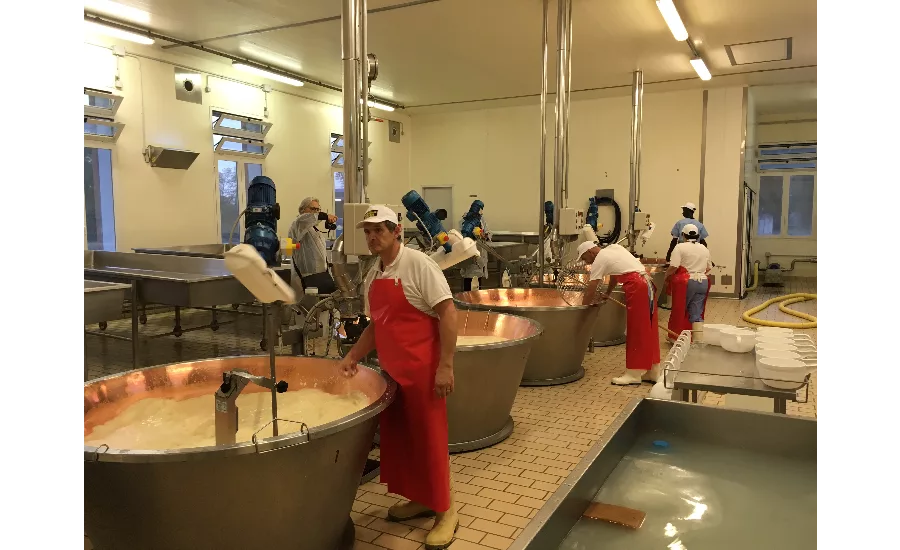

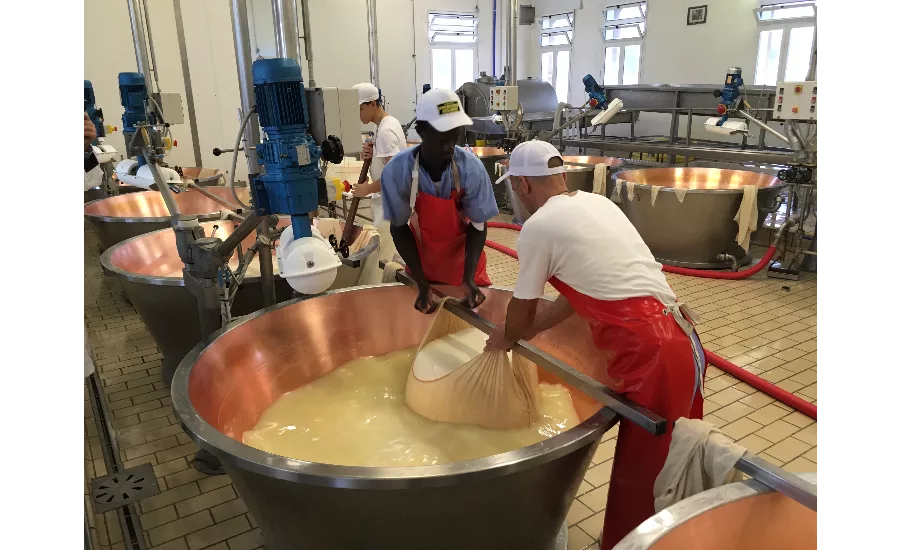

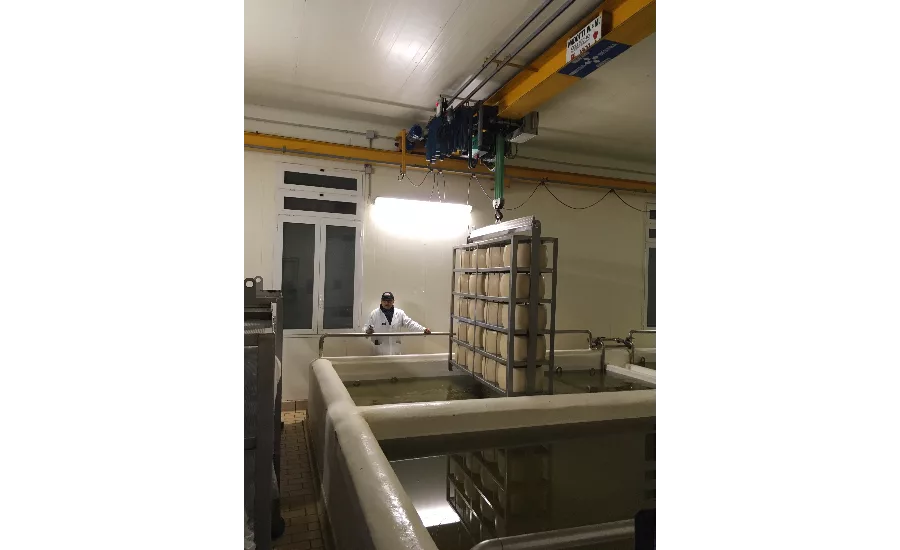
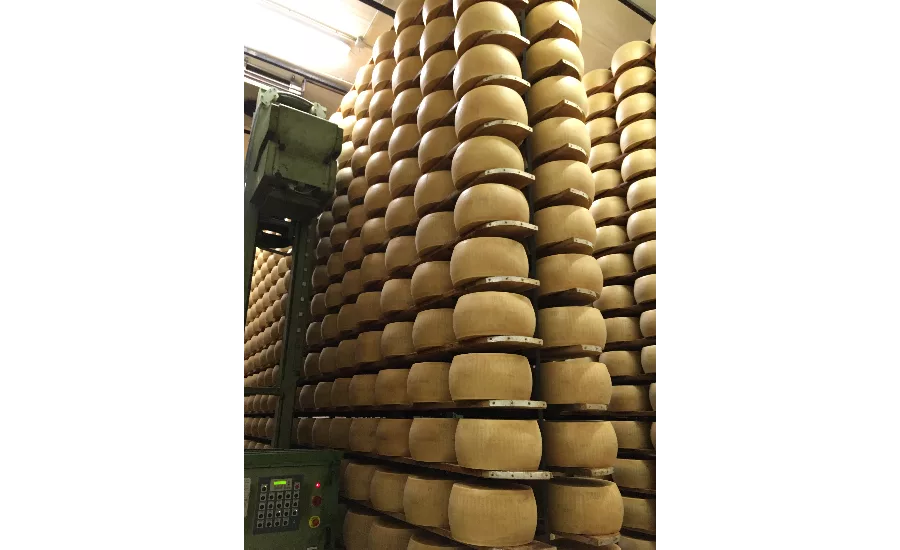
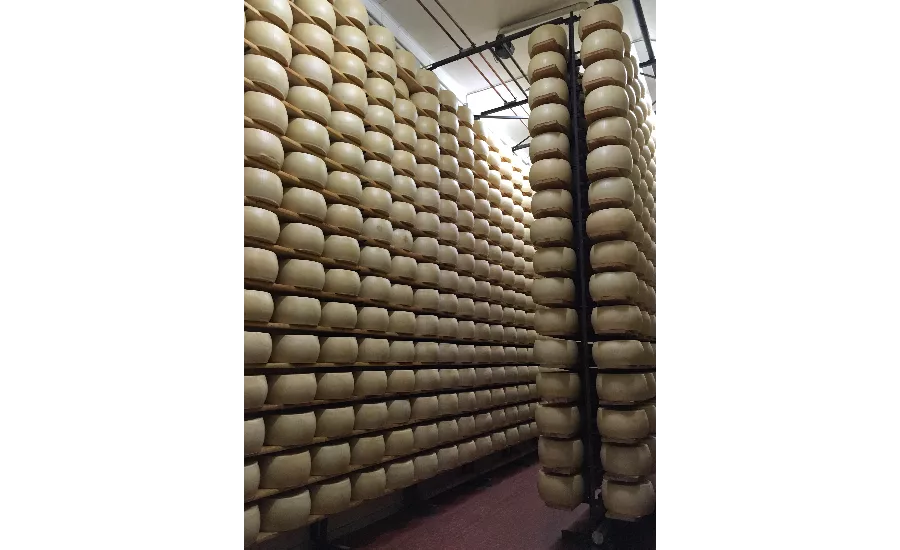
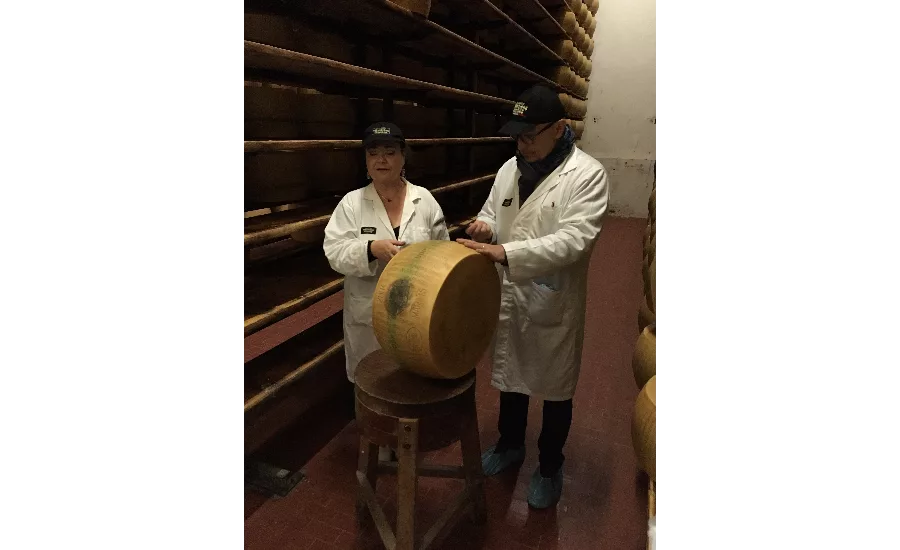
In the Caseificio San Lucio Parmigiano Reggiano cheese factory—located in Sala Baganza just southwest of Parma, Italy—each production day, 1,300 liters of milk are placed in each vat. Half of the milk used is raw cow’s milk, delivered the day before and kept overnight in steel containers to allow the cream to float to the surface. The morning of the production, the cream is removed from the top and the milk leftover is used for cheese making.
The other half of the milk in the vat is fresh milk, delivered the morning of the day’s production. Because raw milk is used, a waiver is needed from the EU due to its food safety law, which says pasteurized milk must be used for cheese making.
The production specifications say the milk is not to be refrigerated in order to preserve three live lactic populations that are in the milk. The cheesemaker cooking the milk becomes a very important person during this step of the processes because the milk needs to be heated long enough to make cheese, but not too much so that the lactic population dies.
In the vats, processors heat the milk up to the cow’s body temperature, which is roughly 36 degrees Celsius, and proceed with two additions. The first is 20 liters of whey—the liquid that is left over from the cheese process—from the previous day’s production, which has been allowed to ferment for 24 hours. This fermentation turns the entire sugar content in the whey into lactic acid. And it is the lactic acid that is the first natural agent used to break down the milk into casein.
Next, the cheesemaker adds rennet, a complex of living enzymes produced in the stomach of cows. In about 10 minutes, the entire contents of the vat coagulate, then the curd is cut to smaller pieces with a big balloon whisk.
“This cheese has 1,000 years of written history, before having steel tools, cheesemakers used branches with thorns,” says Igino Morini, press officer for Consorzio Formaggio Parmigiano Reggiano, a consortium that brings all the dairy producers together to ensure proper use of trademarks and protect against counterfeiting.
The dairy farmers that supply the milk to Caseificio San Lucio, who are considered the actual cheese producers, are only allowed to feed their cows grass and cereals. Silage, fermented grass or other green fodder, is not allowed in Parmigiano Reggiano cheese production. If a cow is fed this, which is allowed for Grana Padano production, a natural preservative is added to the cheese. Parmigiano Reggiano producers are not allowed to add this; thus, the ingredients are only milk, rennet, salt and time.
In another hour, the curds will collect at the bottom of the bell-shaped vat into a ball weighing approximately 100 kilos. This mass will then be cut in half with a knife, and each half will become one wheel.
After poured into its mold and still hot, the cheese will be stamped with a marker that identifies each wheel. A stenciling ban is then put between the cheese and the cheese mold that contains information about the product, such as the date of its production that helps to keep track of its maturation. After the cheese is molded, it is submerged into a brine bath where it stays for 20 days.
The cheese is then stored on shelves for at least 12 months, but can be aged longer than 40 months. All the wheels, whether they are newly produced or just about ready for market, must be brushed and turned upside down. This is done by a robotic machine, which is about the only part of the process that is automated.
“EU law and FDA says if you use raw milk, you have to wait 60 days before eating the product, because if there’s a health issue, it’ll happen within that time,” says Morini.
At one year, the quality of each wheel, not just a sample, is checked for defects. The defects for Parmigiano Reggiano are holes, big or small, which indicate that gas has been produced.
“Any fermentation that is not triggered by the natural lactic populations produces gas,” says Morini.
Quality assessors use mallets, similar to what a doctor might use to test reflexes, to tap all over the wheel to listen for hollow sounds, which indicates holes. Only if the wheel passes this inspection is it fire branded, which means it can be sold on the marketplace.
Looking for a reprint of this article?
From high-res PDFs to custom plaques, order your copy today!







